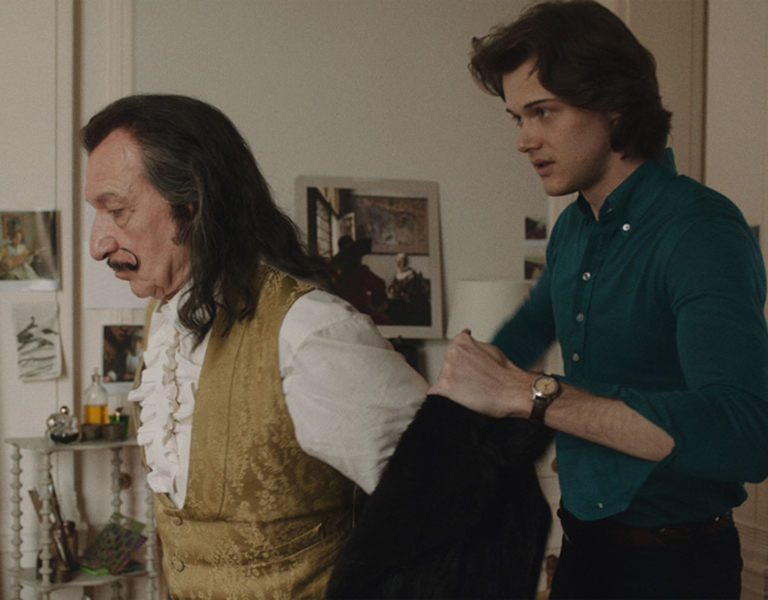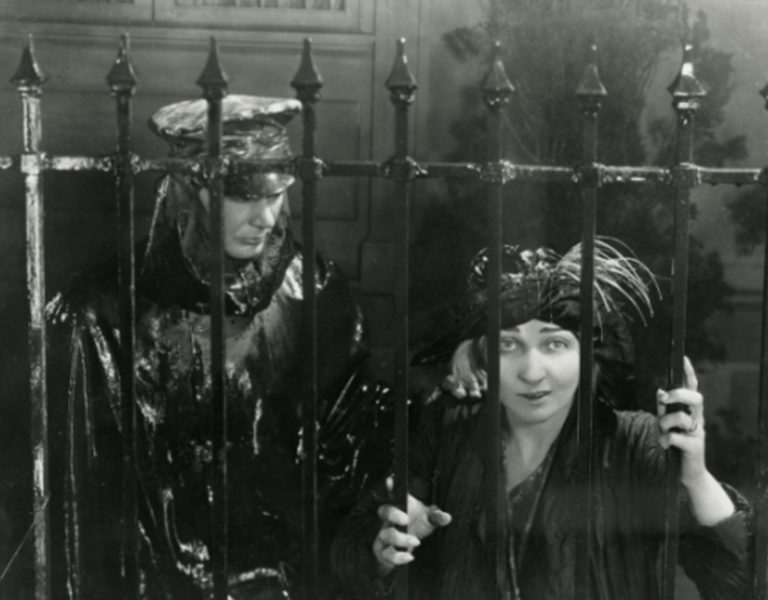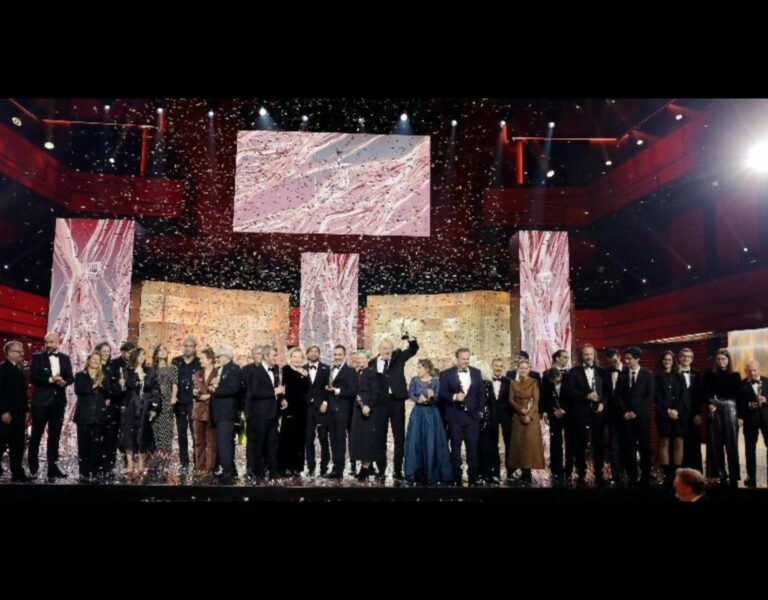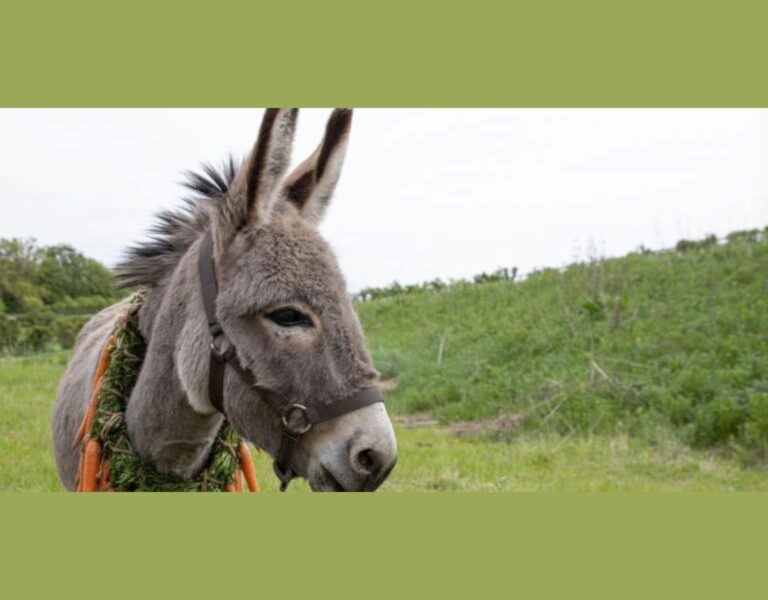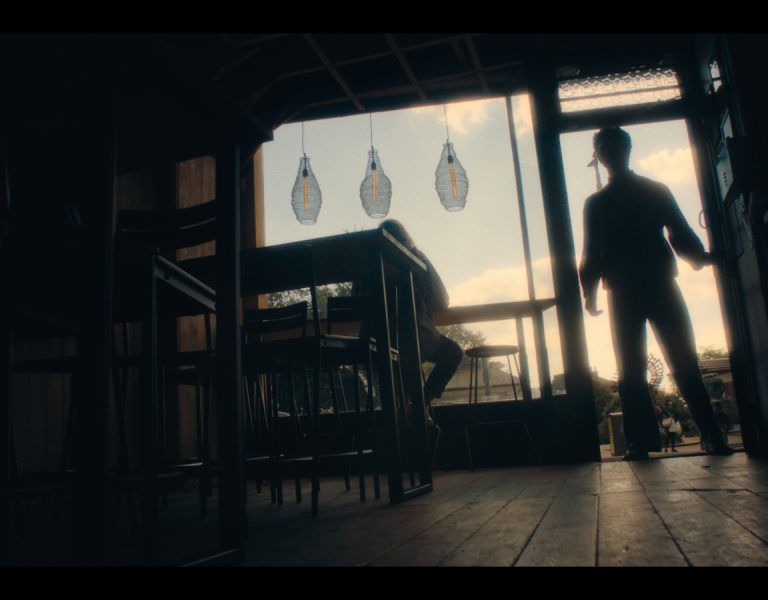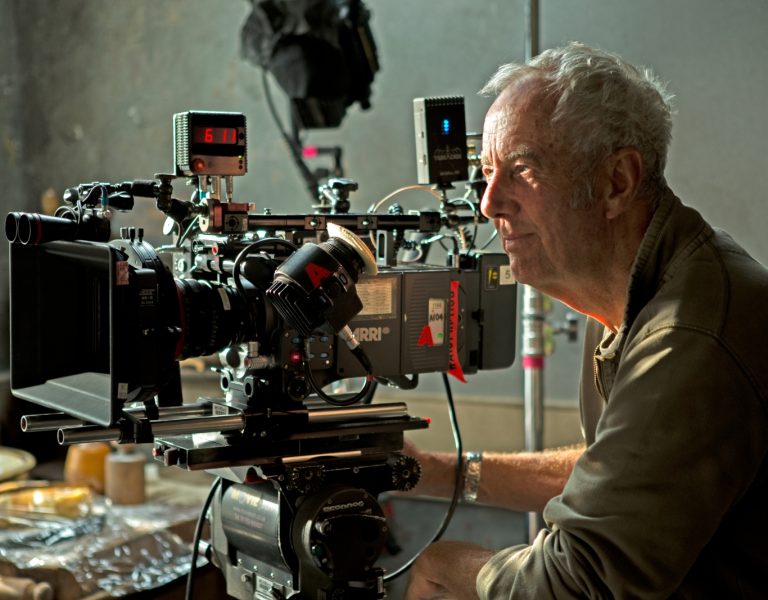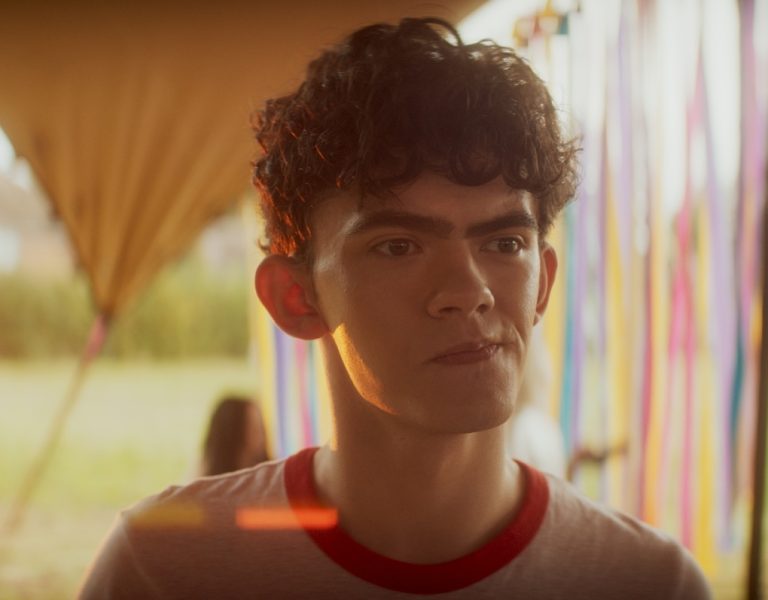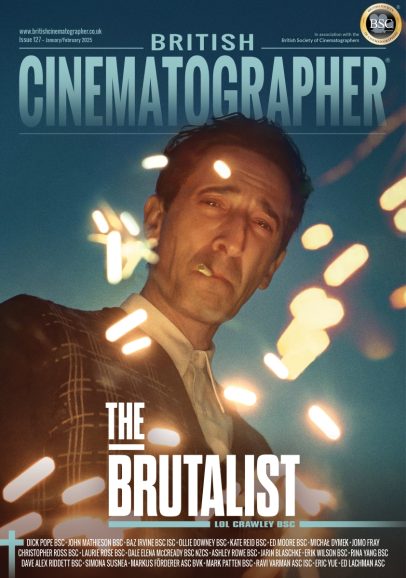The bond between mother and son is seen through Toby Lloyd’s lens in his National Film and Television School (NFTS) graduate film. He reveals how the project was influenced by Spaghetti Westerns, the difficulties of shooting in cars on a limited budget, and capturing a tricky fight scene.
Bandits explores the relationship between a young boy, Kyle, and his mother, Maggie, as she struggles with pressure of taking care of him with rising rents and food prices across the UK. It’s a film told through the kid’s perspective, where the viewer slowly works out the dire situation the mother is in and sees the lengths she’ll go to for her son.
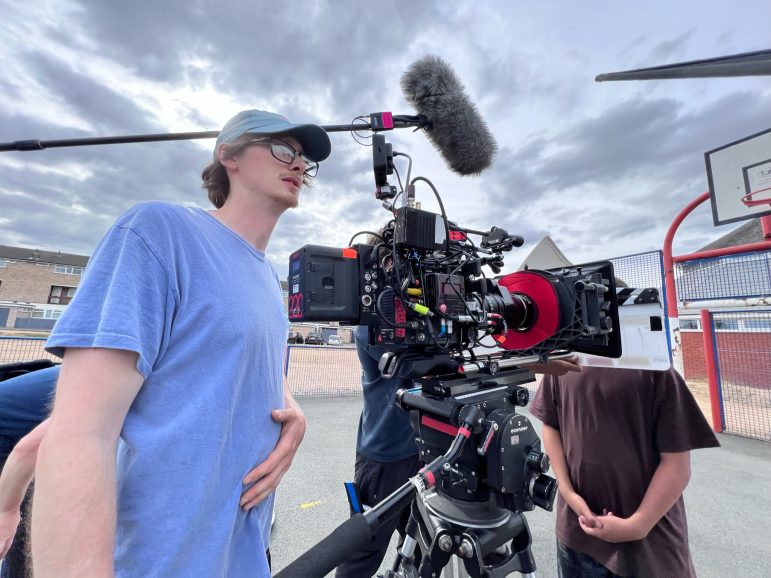
British Cinematographer: What were your initial discussions about the visual approach for the film? What look and mood were you trying to achieve?
Toby Lloyd: My process on a project always starts out with creating a mood board that evolves as ideas crystallise the closer to production we get. This stems from conversations with the director, writer and production designer.
What Nick Alexander (director), Nivitha Muralikrishna (production designer) and I were keen to get across through how the film looked was that we were very much in a kid’s world, up until the moment we snap out of it in the emotional climax of the film. We aimed to find locations with expressive colours within them that would add to this feeling, and this was reinforced by shooting mostly at the kid’s height.
Mood-wise, as we were channelling Spaghetti Westerns, it was key for us to have a saturated, contrasty palette – an almost sunburnt look in places.
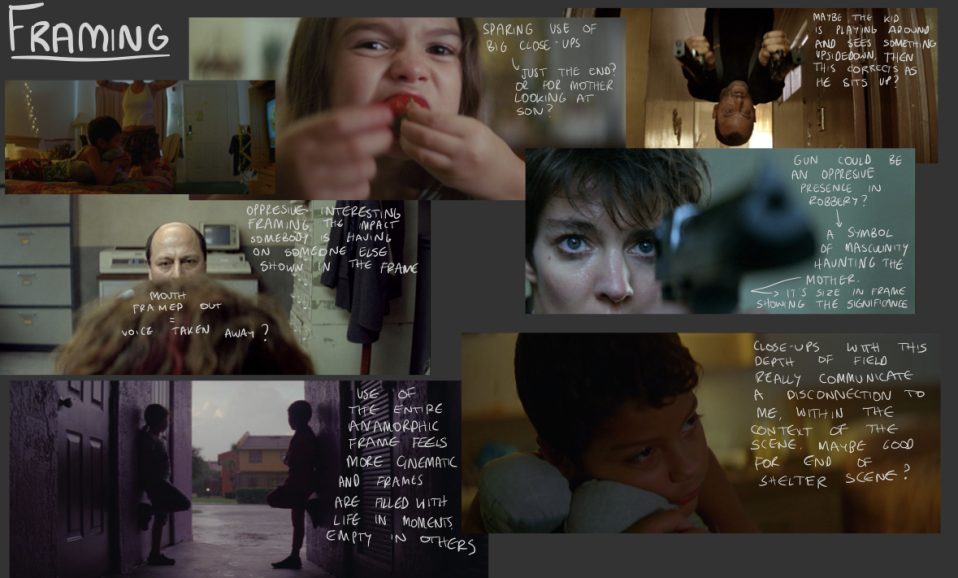
BC: What were your creative references and inspirations? Which films, still photography or paintings were you influenced by?
TL: The major inspirations for us were films rather than paintings or photography. A plot point in Bandits is the love Maggie and Kyle share for Spaghetti Westerns, so Once Upon a Time in the West and The Good, The Bad and The Ugly were key films to look at for us, particularly for our opening sequence. It informed the language that Nick and I chose to shoot with, from how the camera moved, the framing and the aspect ratio – though we shot anamorphic instead of cropping.
The choice to go in the anamorphic direction was facilitated by Lee Mackey at Panavision London, and was largely inspired by Sean Baker’s The Florida Project, we wanted to use the full 2.39 aspect ratio to make Kyle, our lead kid, feel like he existed in a big cinematic world, and when we were at his height, he felt big in that world.
The final film we took inspiration from was the feeling in Dog Day Afternoon – the overbearing heat in that film was an inspiration for the atmosphere we were trying to create.
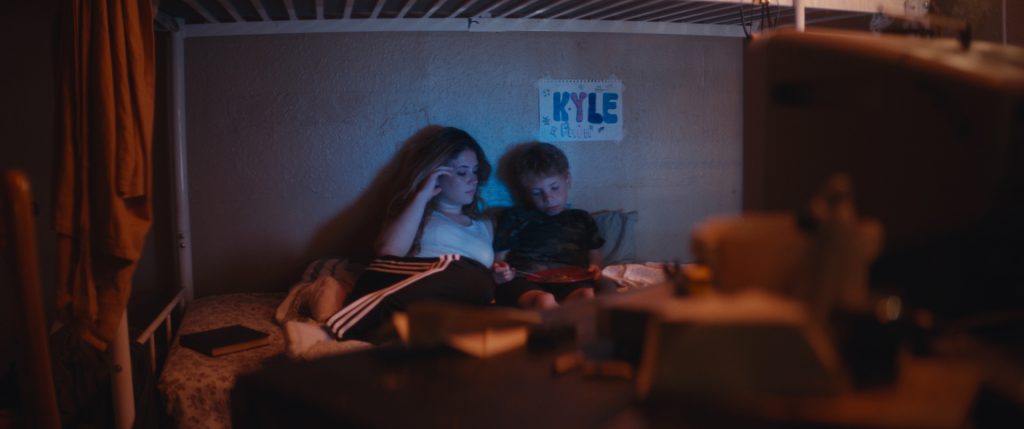
BC: What filming locations were used? Were any sets constructed? Did any of the locations present any challenges?
TL: I think the biggest challenge location-wise from a cinematography perspective on this film is how many of them there were. The film is effectively a road movie, and this meant that creating a ‘look’ in each interior that felt congruous, whilst also stylised, was a big challenge, but one I’m happy with.
The interior of Kyle and Maggie’s room was constructed in a small room next to a stage – we tented the window, then for the exterior shots through the window we used an actual location.
Also shooting in cars is a huge challenge with a limited budget, and I was very lucky the legendary Jem Morton came to do car rigs for me on our final day. He’s a true professional and I learnt a lot from him.
Finally, at least half of the film takes place outside, so controlling the natural light was a challenge. We were unfortunate that most days we had intermittent cloud, so detailed scheduling, lots of 12×12 frames and being flexible were the only real solutions!
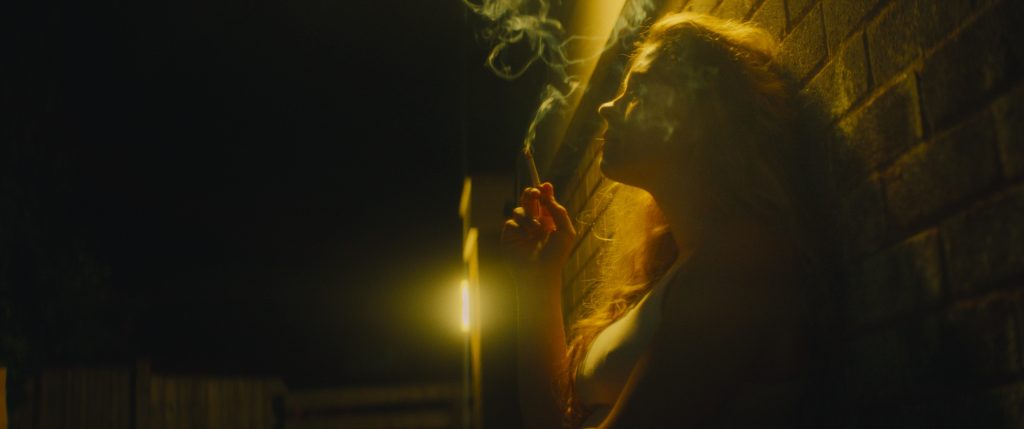
BC: Can you explain your choice of camera and lenses? What made them suitable for this production and the look you were trying to achieve?
TL: I used the ARRI Alexa Mini on this production and we shot with a single camera. I love the look from the Alexa sensor – it’s a bit of a cliché really, but it’s an image I know and trust. I tend to push the sensor into the higher ISO range, shooting between 1280 to 1600, to introduce some artefacts as I love an image with some texture to it.
The lenses we shot with were a mixture of Panavision anamorphic lenses, some C-Series, a USG 35mm and a couple other special lenses, all generously provided by Lee Mackey from Panavision London. I was very keen to shoot anamorphic as I thought it would help show how expansive the world is for Kyle. The lenses ended up being the perfect tool for the production to evoke the feeling we aimed to put across, and I feel incredibly lucky to have had the opportunity to shoot with glass that feels like you’re holding film history in your hands.
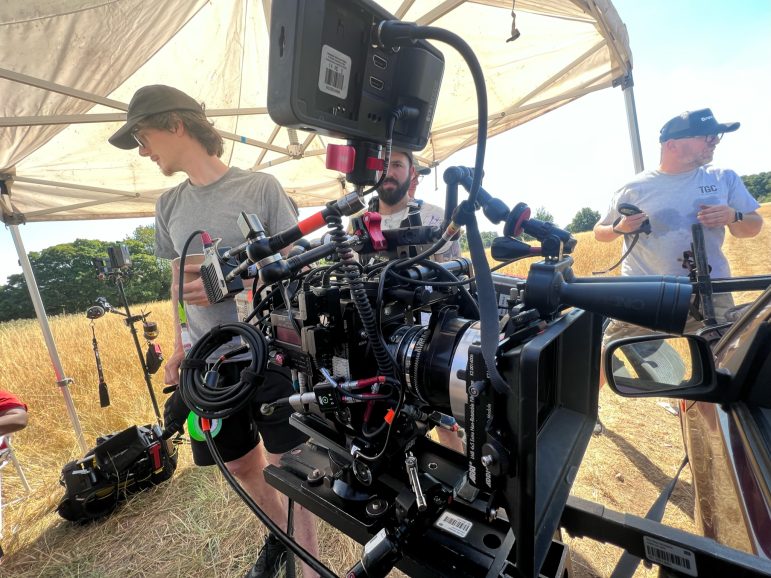
BC: What was your approach to lighting the film? Which was the most difficult scene to light?
TL: My approach to the lighting of this film was a stylised naturalism. As quite a lot of the film takes place in a car or outside, I was keen for the interiors to have more of a ‘look’, tying in the saturation of the exteriors in with the interiors. We spend the majority of the film experiencing the world through Kyle’s eyes, so it was really crucial to me that the film had the sense that we were seeing things through a kid’s eyes.
The hardest day for lighting was at the petrol station. We had exteriors for the majority of the morning – where we were eventually chasing light as the sun set below a building, and then an interior inside the petrol after sunset where we had to create daylight – while shooting a character with an extremely reflective helmet and one wall was basically just windows. Collaborating with the gaffer, Jakub Paczos, we came up with a detailed plan to get enough light into the space for it to feel real.
BC: What were you trying to achieve in the grade?
TL: Nick and I worked with an excellent colourist on Bandits called Mara Ciorba and her dedication to the project was crucial to the final look of the film. In a sense, the grade started in pre-production where Mara and I developed a LUT together based on some filter tests I had done. Broadly speaking I think the look we created there carried through to the final film.
What was key to the look of the film was a nice level of saturation and contrast without going too far. Finessing that took a bit of time, but Mara’s taste is extraordinary and I think she got the balance right. Having the LUT whilst I was shooting was also a great way to see how far I could push things introducing colour with light also.
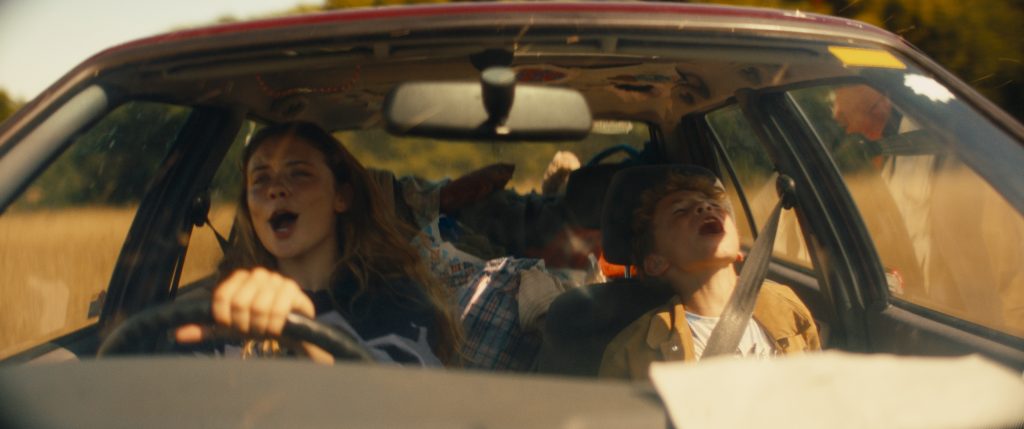
BC: What were the most challenging parts of the film to shoot and how did you overcome those obstacles?
TL: I think the most challenging part of the shoot was dealing with child hours. Basically every scene we shot had Blake, who played Kyle, in it, which meant we had to be incredibly on the ball whenever he was on set. Blake’s time was handled brilliantly by the 1st AD Matt Hall, and I think the only reason it was achievable for us to make this film was detailed prep, where every shot was broken down in a schedule and allotted a certain amount of time. Nick and I knew what we were trying to achieve at the start of every day, and this confidence going into the shoot meant we achieved almost everything we set out to do!
BC: Is there a specific scene or shot that you’re especially proud of?
TL: The final part of the film in the petrol station, into the final scene, is what I’m most proud of. To pull off a fight scene with pretty complicated stunts, and then the car work we did, while maintaining the emotional journey of the characters – which ultimately is the most important thing – I think is quite an achievement. It was such a huge team effort, and really demonstrated the significance of great crew collaboration to me, from all departments.
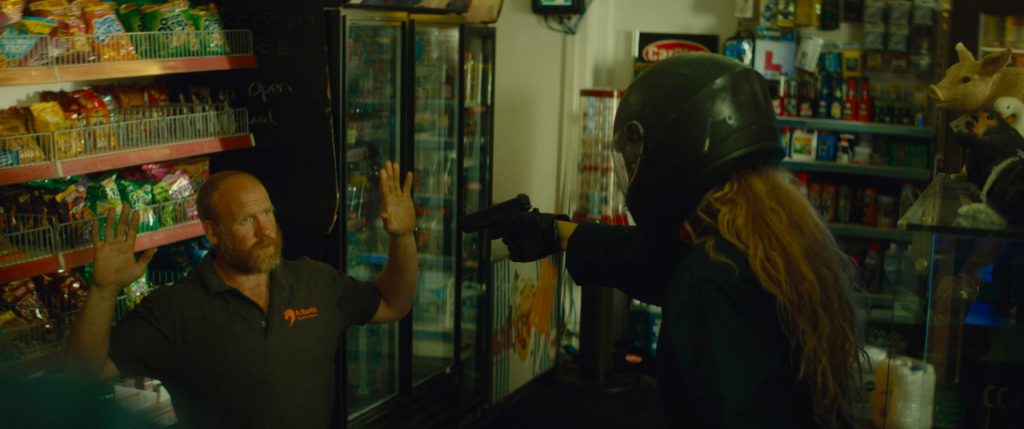
BC: What lessons did you learn from Bandits that you’ll take with you onto future productions?
TL: The main lesson from this production for me was to make sure you’re getting the key shot to tell each scene first. It’s something Bradford Young ASC told us when he came to talk to us at the NFTS. It seems to me the intention should never be coverage, it should be to tell the story in the most concise and effective way – with bits of flair added in here and there. Some of the days on this film were a little bit over-complicated, and I feel like stripping each scene back to the bare bones of what it could be is quite an exciting prospect going into projects in the future.
BC: What would be your dream project as a cinematographer?
TL: I love exploring human stories, and at the moment what particularly interests me is doing this through genre, where a look can be pushed, without supplanting the emotional journey in the film. Something like the TV show I Know This Much Is True has the perfect balance of genre elements, while staying true to the human story, and Jody Lee Lipes ASC’s work on the show is absolutely incredible.
I’m also a big fan of Altman and ’70s New Hollywood, and New Taiwanese Cinema of the ’80s/’90s, so a project that combined those filmmaking techniques would be perfect!




